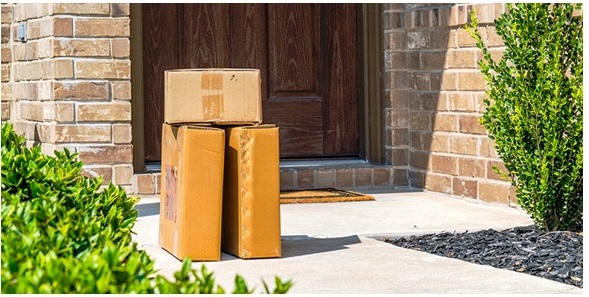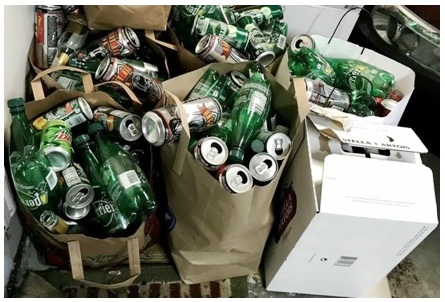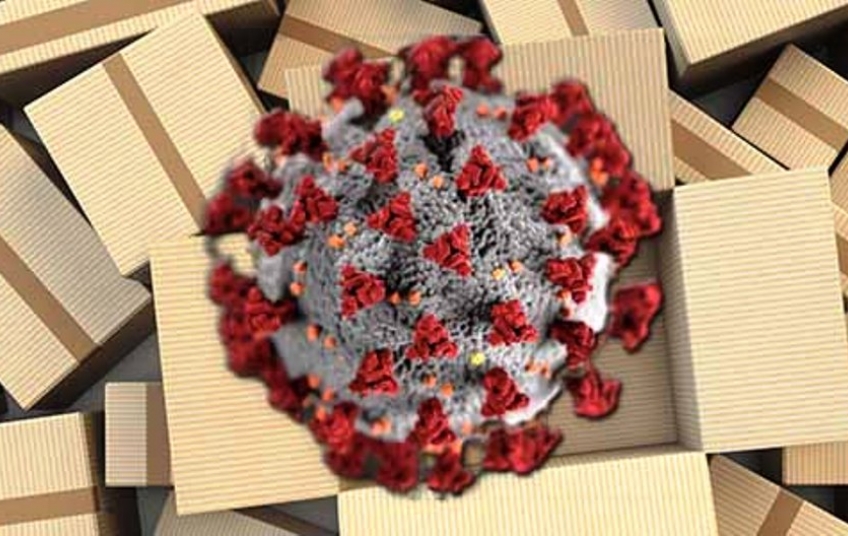COVID-19 appears to be the top news story all over the world right now. It has infiltrated every part of our lives and has changed the way that we see and do just about everything. It has even found its way into the “world of packaging”. The impact of COVID-19 may be so great that there will be many new “normals” after the pandemic including those for packaging. COVID-19 has impacted several areas of packaging including the impact on the consumer for handling product and food packaging, recycling of packaging materials, and also the future of package designs.
History and Background of COVID-19
COVID-19 is a severe acute respiratory disease that is caused by a new novel human coronavirus or SARS-CoV-2. The disease caused by the virus is called coronavirus disease 2019 and has been shortened to COVID-19 in which CO’ stands for ‘corona,’ ‘VI’ for ‘virus,’ ‘D’ for disease and -19 for 2019. COVID-19 was first reported in Wuhan China in December 2019 and has currently spread all over the world in every continent except Antarctica with over 13.8 million infections and 590,000 deaths. Due to its rapid and vast spread, the World Health Organization (WHO) has declared it a pandemic. The main way that the virus is thought to spread is from person to person through respiratory droplets that become airborne from an infected person’s nose and mouth from talking, sneezing, and coughing. The airborne droplets can then get into the nose and mouth of a person that is in close proximity (within 6 feet) of them. To prevent contact with the airborne droplets, the Centers for Disease Control and Prevention (CDC) is encouraging social distancing of a minimum of six feet apart and wearing masks. Although not the main way that the virus is thought to spread, SARS-CoV-2 could also be transmissible from contacting an infected nonporous surface like a door knob or keyboard and then touching your nose and mouth which allows the virus to be inhaled into the lungs. The CDC encourages frequent hand washing with soap and water for 20 seconds to lower the risk of transmission from surfaces.
Food and Online Shopping Packaging
The behaviors and attitudes consumers have towards packaging has drastically changed because of the COVID-19 pandemic. Before the pandemic, most people never thought about wiping down the external packaging of the food that they received from restaurants and the items that they picked up from the grocery store or the package that was left on their doorstep from an online order that they placed with Amazon. However, due to so many unknowns about SARS-CoV-2, its severe and sometimes fatal effects and seeing how quickly it has spread, more questions arose about how the virus was spreading including if it could stay alive for a period of time on surfaces. This was a fair assumption since rhinoviruses that cause the common cold can survive on indoor surfaces for up to seven days and tend to last longer on hard, nonporous surfaces such as plastic or stainless steel. In fact, a recent survey showed that more than two-thirds of US consumers worry about contracting COVID-19 from food packaging and that more than 40 percent use household disinfectants to clean the products that they purchase.
Both the CDC and WHO reference a study that was carried out by scientists from the U.S. National Institutes of Health in March 2020 which determined that SARS-CoV-2 can survive on cardboard for 24 hours and on plastic and stainless steel for 72 hours. This became concerning because the packaging that is used to contain groceries, takeout food, and other products is made of these materials.
Recommendations to address the concern of grocery packaging being contaminated by the virus was addressed by Dr. Sanjay Gupta, an American neurosurgeon and senior medical correspondent at CNN. His recommendation includes designating a “dirty” and “clean” area for unloading groceries. The groceries are to initially be placed in the designated “dirty area” and each food package surface is then wiped down. After wiping the surface of the packaging down it should then be placed in the “clean” area. The counter surfaces should be disinfected after this process. More recently however, the U.S. Food and Drug Administration (FDA) responded to questions from the public about the transmissibility of the virus from the surfaces of groceries by saying that the risk is low. The FDA posted the following Tweet on April 16, 2020:
FDA has heard your concerns about shopping for #food safely. We want to assure you there is currently NO evidence of human or animal food or food packaging being associated with transmission of the #COVID19. More food shopping info here: https://t.co/fYSYA9TH2R — FDA FOOD (Ctr for Food Safety & Applied Nutrition) (@FDAfood) April 16, 2020
The low risk is being based on clarification about the study mentioned above from the U.S. National Institutes of Health that determined how long the virus could remain viable on the surfaces of various materials. According to one of the scientists that worked on the study, Jamie Lloyd-Smith, the results of the experiment were based on “certain conditions in the laboratory, which are obviously kind of artificial”. He also clarified that the detection of SARS-CoV-2 on cardboard, plastic and metal did not account for other factors that could help to inactivate the virus, such as sunlight, disinfectants or viral load (amount of virus). In other words, since the study was carried out at specific conditions (of temperature, humidity and viral load) the results may not be reflective of how long the virus could thrive in real-life conditions. Since there is still uncertainty, experts are advising consumers to lean on the side of caution which is to discard the bag that the groceries are in and then to properly wash your hands afterwards.

For product that is delivered to your doorstep from online shopping, the CDC says that it is not likely that the virus can survive long in transit. However, this is still uncertain.
Jay Carney, Amazon's senior vice president of global corporate affairs said, "Our advice to customers is to take the precautions that they feel are the right ones for them," like removing and disposing the outer package that the product is shipped in, wiping down the inner package and then properly washing your hands. Amazon also says that since most products have been packaged for a while, that the product that is inside the packaging presents a lower risk of contamination than the outer packaging surfaces. Another option presented by Amazon is to leave the package in a remote area outside your home for a period of time to allow the virus to die. The specific period of time is not clear but it should be kept in mind that the virus needs a human host organism to survive and multiply and that the only data that has been determined for the survival of the virus on packaging is 24 hours on cardboard and 72 hours on plastic and stainless steel. The thought process is that if in fact the virus can survive on cardboard for only 24 hours then leaving a cardboard package outside for at least 24 hours will give the virus time to die and allow you to bring it inside safely. Amazon also recommends wiping the package down before bringing it inside.
Recycling

Recycling of packaging materials has also been impacted by the COVID-19 pandemic. Used packaging like cardboard boxes, metal cans, plastic containers and bags makes up a substantial amount of recycled materials. Recycling is a very hands-on process that requires workers to sort through all of the items. The pandemic has caused fear in the Waste Management and Recycling industry that workers may be at risk to exposure of the virus because it could remain on the surface of waste packaging bags and other materials like used packaging items when they are collected and sorted. Because of this fear, some municipalities have suspended separate collection and some recycling centers have been closed. This has caused a reduction in recycled materials which impacts the global supply chain that depends on recyclables to make common products like toilet paper, paper towels, and cardboard boxes. Some industry leaders have already reported that due to the high demand for these products, the prices doubled for recycled paper and tripled for recycled cardboard between February and May 2020.
Packaging Designs
Due to the COVID-19 pandemic, consumers now feel vulnerable to diseases and illnesses and are more conscious than ever about how clean the packaging is on the products or food that they purchased. A survey carried out by FMCG Gurus, a market research company found that 28% of consumers say that they will now pay closer attention to the cleanliness of the place from which products are purchased and that 26% say that they would like more information when it comes to the safety and handling of products. The survey also found that 42% of consumers say that they are now being more attentive to the quality of packaging used when it comes to food and drink. This was not the case before the COVID-19 pandemic. FMCG Gurus market research company believes that attitudes and priorities towards packaging are changing because of COVID-19 due to a survey that they carried out in April 2020 across 18 countries. This survey showed that 40% of consumers said that their attitude towards packaging had changed and 66% of those consumers said that the change was positive. Also, 69% of consumers believe that packaging keeps food and drink safe. This new attentiveness to packaging hygiene may shape the future of the next new normal in packaging.
Design changes associated with the pandemic may focus on packaging design changes like presenting a better picture of keeping product safe and clean, material changes to reduce the viability of the virus, less packaging materials and designs that accommodate the increase that has occurred in online shopping. Other design changes may focus on revised delivery mechanisms for packaging to meet the demand form consumers for convenience but that also address hygiene concerns like those that are presented by stand-up pouches (i.e. for baby food and energy drinks), which require consumers to touch the surface of the packaging with their hands and to put it in their mouths to consume the contents.
The COVID-19 pandemic has taken a toll on the world. Its impact will cause a new normal in the way that we live. This includes a new normal for packaging. The change in attitude and behavior towards packaging that has resulted from the pandemic may not be easily changed after the pandemic. Recycling may never be the same. The future of package designs will also likely be forever changed.
References
https://www.boston.com/news/health/2020/04/04/heres-how-dr-sanjay-gupta-says-to-properly-disinfect-your-groceries
https://www.cdc.gov/coronavirus/2019-ncov/faq.html#Basics
https://www.consumerreports.org/food-shopping/how-to-protect-yourself-from-coronavirus-when-grocery-shopping/
https://www.ecomaine.org/pandemic-recycling
https://www.epa.gov/facts-and-figures-about-materials-waste-and-recycling/containers-and-packaging-product-specific-data
https://www.foodpackagingforum.org/coronavirus-and-packaging
https://www.foodpackagingforum.org/news/packaging-could-be-involved-in-spreading-novel-coronavirus
https://www.inc.com/jason-aten/heres-how-amazon-says-you-should-handle-packages-to-prevent-spread-of-coronavirus.html
https://www.mckinsey.com/industries/paper-forest-products-and-packaging/our-insights/beyond-covid-19-the-next-normal-for-packaging-design#
https://www.medicalnewstoday.com/articles/live-updates-coronavirus-covid-19#1
https://nortonchildrens.com/news/how-long-does-the-cold-virus-live-on-surfaces/
https://www.nytimes.com/wirecutter/blog/coronavirus-packages/
https://www.packagingnews.co.uk/features/comment/mike-hughes-covid-19-consumers-re-evaluating-attitudes-packaging-14-05-2020
https://pixabay.com/images/search/coronavirus/
https://www.reuters.com/article/us-health-coronavirus-southkorea-explain-idUSKBN2390RQ.


































